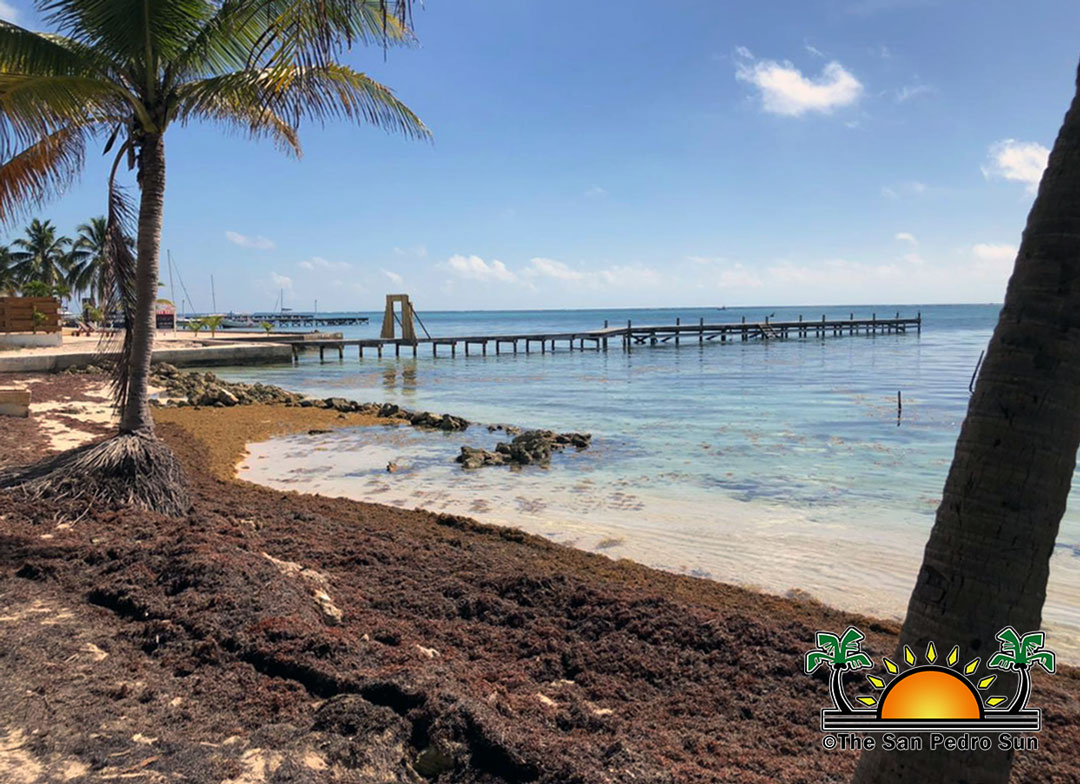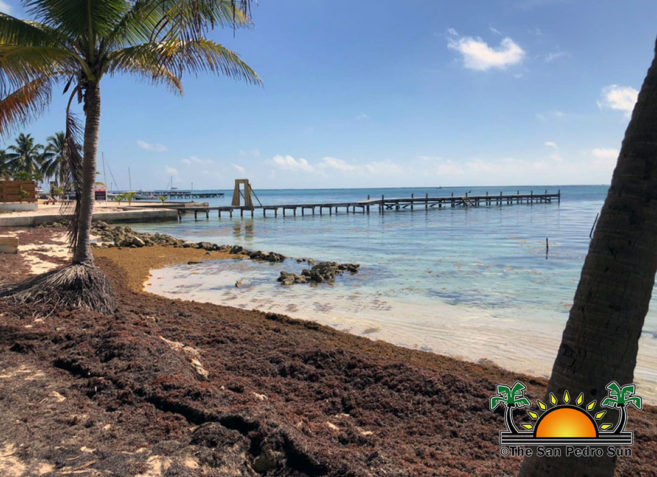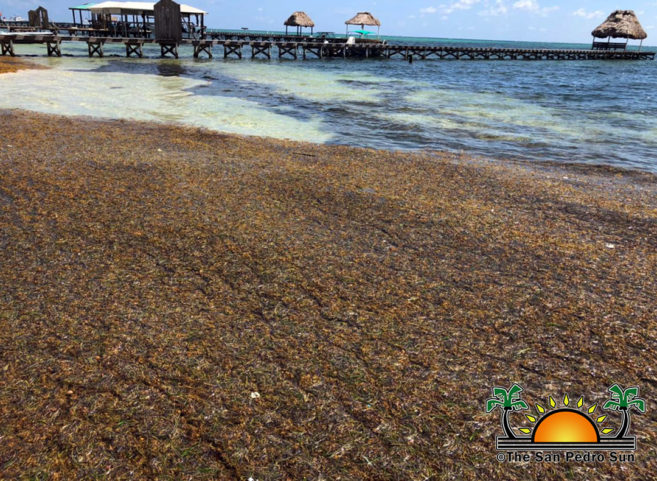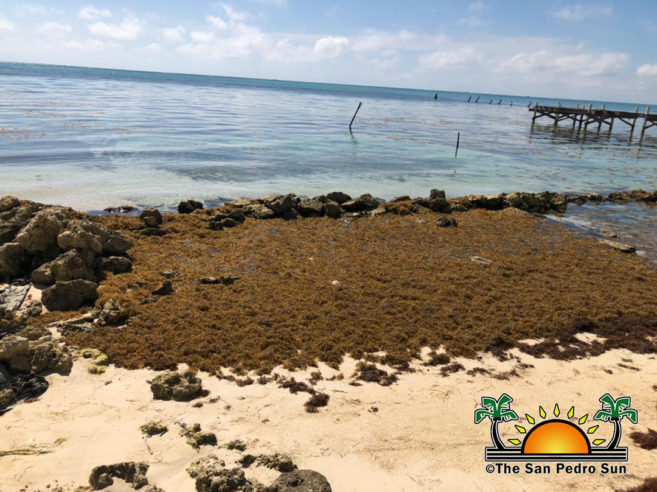The Sargassum seaweed has once again arrived at San Pedro Town’s shores, slowly accumulating on the island’s windward beachside. According to a National Meteorological Service of Belize report, there is currently little Sargassum over the Caribbean Sea. However, an increase is expected in the coming weeks, with an overall bloom intensity similar to 2019.
According to the Caribbean Regional Fisheries Mechanism (CRFM), based on a report released in February by the University of South Florida Optical Oceanography Lab, the outlook of 2021 Sargassum blooms in the Caribbean Sea and the Gulf of Mexico will likely see an increase in the seaweed in March and April of this year.
Authorities on Ambergris Caye are aware of the Sargassum build-up on the beaches, which happens each year and threatens tourism. A plan has yet to be revealed to tackle this natural phenomenon’s inconvenience to the island and the country every year. Many private properties on the island clean their beaches daily to keep their area free of seaweed. Sargassum is not welcome because of its effects on the health of humans and marine wildlife. It can deprive marine life of oxygen, and when it beaches, it emits toxic hydrogen sulfide gas and a highly unpleasant rotten-egg odor while rotting.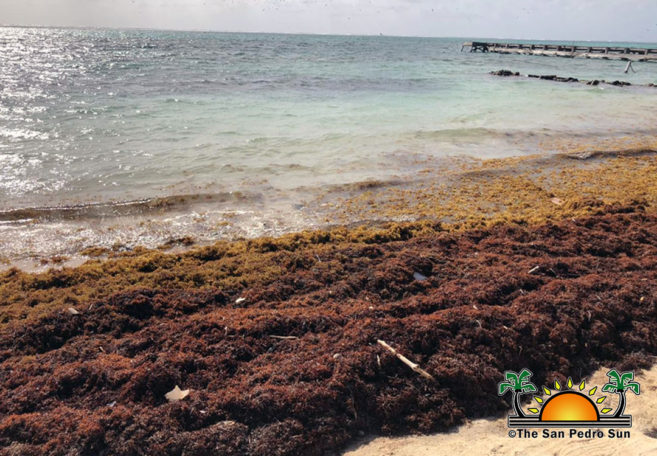
A regional plan to tackle the Sargassum seaweed
The CRFM is currently in a three-year collaborative agreement with New Zealand agencies, like Plant and Food Research, to address the Sargassum influxes in affected Caribbean countries. According to CRFM, there is a project to explore new technologies and value chains from the seaweed. The aim is to develop Sargassum-derived product prototypes and production processes, including a commercialization strategy to support its marketing. Belize will be one of the beneficiaries of this regional project.
The influx of Sargassum has been increasing since 2011 within the Caribbean Sea. The increase in the bloom is attributed to a rise in water temperature and agricultural fertilizer runoff.

